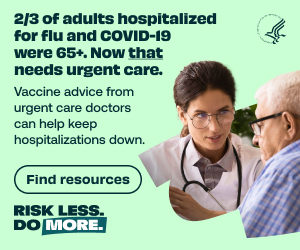
Mass hysteria. Even though we as emergency physicians pride ourselves in having cool heads in the wildest of circumstances, we are not immune to this psychological phenomenon. The emergency department, in fact, is the perfect breeding ground for mass hysteria. And while the case above has an almost humorous element when viewed in hindsight, there’s nothing funny about getting so carried away that we can’t provide objective care to our patients.
To get technical, mass hysteria is known as mass psychogenic illness or mass sociogenic illness. The “illness” is defined as “the rapid spread of illness signs and symptoms affecting members of a cohesive group originating from a nervous system disturbance involving excitation, loss or alteration of function, whereby physical complaints that are exhibited unconsciously have no corresponding organic etiology.” While this is a modern medical definition of mass hysteria, this phenomenon has been described for over 600 years, with such proud heralds as Chicken Little (“The sky is falling!”) and H.G. Wells (“The Martians are attacking!”).
More recently, after the attacks of September 11, 2001, reactions of mass hysteria among the public sky rocketed in response to Anthrax scares. Shortly after the Washington, D.C. anthrax scare, an elderly female presented to the ED where a colleague of mine was working with the chief complaint of dyspnea. “It started after I opened this envelope and a white powder spurted out,” she said. Looking down at the envelope pushed in her face, the triage nurse noticed a fine white dust and noxious odor. She immediately felt ill, started vomiting and hyperventilating. Calling for help, multiple other staff members ran in and they too quickly became overtaken by this odor. As the physician on duty, this colleaugue of mine identified a hazardous material exposure and initiated the haz mat protocol. The ED was locked down. No one was allowed to enter or leave. The hospital went on complete diversion. The F.B.I. and local EMS haz mat teams were set into action. Panic spread through the ED. The noxious smell was now everywhere. Multiple other patients, staff and visitors were overcome, several fainted. Looking out the window, one saw the yellow hazard tape and tents being set up. In the end, the F.B.I. examined the envelope and found no trace of any hazardous material. In fact, there was no explanation for the multiple ailments and everyone spontaneously recovered from the mystery powder.
In the first two weeks of October 2001, over 2300 anthrax false alarms occurred, many involving sociogenic symptoms but no foreign substances were detected. Since that time, the FBI has responded to more than 16,000 reports of actual or threatened use of anthrax and other hazardous materials. Of the 1800 samples sent to the Illinois Department of Public Health Laboratory to be tested, all were found to be negative for the presence of anthrax, indicating the public’s heightened sensitivity to an unsubstantiated threat.
While circumstantial evidence is readily available, emperical data for mass hysteria is elusive and difficult to quantify. Physicians have, however, identified a “confluence of eight symptoms” that commonly describes cases of mass hysteria. These symptoms include the following: Symptoms with no plausible organic basis, symptoms that are transient and benign, symptoms with rapid onset and recovery, occurrence in a segregated group, presence of extraordinary anxiety, symptoms that are spread via sight, sound or oral communication; a spread that moves down the age scale, beginning with older or higher status people; and a preponderance of female patients. The most common physiological symptoms include headache, hyperventilation, syncope, and abdominal distress.
Maturity and experience has a great deal to do with this. After seeing hundreds of gunshot victims, the event becomes passé. An experienced physician recognizes that screaming and hollering is a good sign while silence is a poor prognostic indicator. Physicians that handle emergencies best have the ability to distance themselves and practice isolationism. Isolationism is the ability to concentrate on the single important issue, blacking out all the extraneous stimuli. A good clinician must be able to weed through all the subjectiveness to see objectively. One must make a list of all the objective evidence & signs and then compare it to a list of all the subjective complaints & symptoms. The objective list obviously needs to have more influence on your decision making. The clinician must also be constantly aware of their own subjectiveness and feelings.
Giving in to mass hysteria can have negative effects far beyond an upset stomach. This social illness also places significant financial burdens on hospitals. “Physicians are trained to search for an organic cause of disease and it can be very difficult to resist pressure to perform increasingly obscure tests and search for an elusive diagnosis, particularly amid the substantial public concern frequently generated by such outbreaks,” said Timothy Jones, MD, an epidemiologist who has researched MPI. “Nonetheless, ordering large numbers of tests can be problematic.” In addition to the expensive costs of these excessive tests, the physician may face other negative effects as well. The continual ordering of tests will statistically produce an abnormal result, leaving a physician with the task of explaining a negative test that may have no clinical significance.
In this age of ‘orange alerts’, terrorists threats, and media overload, mass hysteria is sure to be a worsening issue. In order to prevent unnecessary financial burdens and undue patient stress, it is important to minimize patient exposure to other anxiety-stimulating situations in the ED and media coverage. Physicians have to be the example of calmness while being compassionate. Physicians must be the bedrock by which the staff, patients and visitors can build their secure foundation upon.
1. Symptoms with no plausible organic basis
2. Symptoms that are transient and benign
3. Symptoms with rapid onset and recovery
4. Occurrence in a segregated group
5. Presence of extraordinary anxiety
6. Symptoms that are spread via sight, sound or oral
communication
7. A spread that moves down the age scale, beginning with
older or higher status people
8. A preponderance of female patients
Aaron Meyer and Pamela Frazzini are seniors in Saint Louis University’s Medical Scholars Program and will be attending St. Louis University School of medicine next year.
Joe DeLucia, MD, is an assistant professor at St. Louis University Hospital
References
1. Weir, Erica. Mass Sociogenic Illness. JAMC 2005;172(1):36.
2. Jones, Timothy F. Mass Psychogenic Illness: Role of the Individual Physician. American Family Physician 2000;62(12).
3. Author unknown. “Radio Listeners in Panic, Taking War Drama as Fact.” New York Times. October 31, 1938. http://members.aol.com/jeff1070/wotw.html.Accessed October 14, 2007.
4. Bartholomew R, Wessley S. Protean nature of mass sociogenic illness:From possessed nuns to chemical and biological terrorism fears. British Journal of Psychiatry 2002;180:300-6.
5. http://www.fbi.gov/congress/congress02/daly07022002.htm. Testimony of Patrick J. Daly. July 2, 2002. Accessed October 14 2007
6. House R, Linn Holness D. Investigation of Factors Affecting Mass Psychogenic Illness in Employees in a Fish-Packing Plant. American Journal of Industrial Medicine 1997;32:90-96.
7. Gamino L, Elkins G, Hackney K. Emergeny Management of Mass Psychogenic Illness. Psychosomatics 1989;30(4):446-9.
8. Stone, Richard. “Analysis of a Toxic Death.” Discover Magazine. April 1995
9. Levine RJ. Mass Hysteria: Diagnosis and Treatment in the Emergency Room. Archives of Internal Medicine 1984;144:1945-6.
10. Radford B, Bartholomew R. Pokémon Contagion: Photosensitive Epilepsy or Mass Psychogenic Illness? Southern Medical Journal 2001;94(2):197-204.







